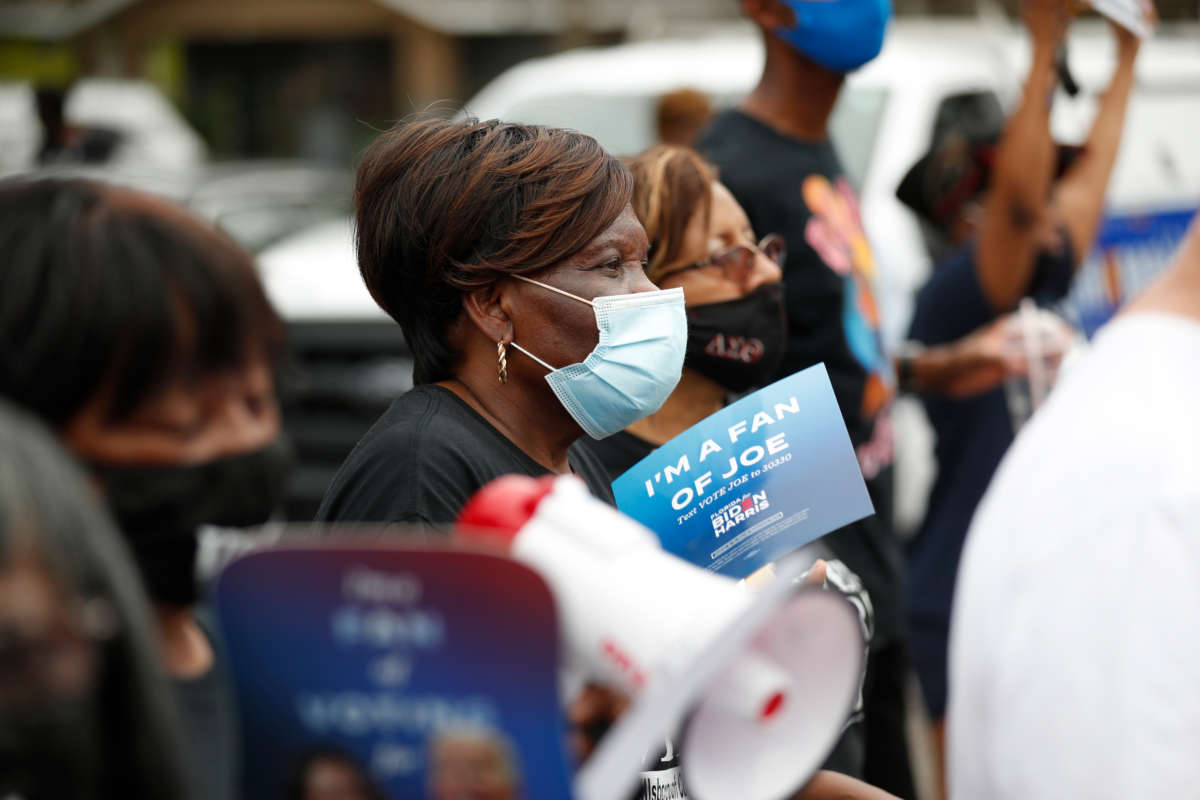In a stunning win Tuesday night, labor activists in Florida managed to pass Amendment 2, raising the state minimum wage up to $15 per hour by 2026. From 2026 onward, it will be inflation indexed, so that its value won’t corrode over time.
Needing 60 percent support to become law, the amendment, supported by labor unions and by a political committee called Florida for a Fair Wage, notched up 60.8 percent.
Currently, the state minimum is a mere $8.56, and advocates of the increase — many of whom sent in $8.56 and $15 donations to the amendment’s campaign — believe that somewhere in the region of 2.5 million individuals will see their incomes rise as a result of the new law, and 1.3 million families will actually be lifted out of poverty.
In passing this amendment, Florida joined a slew of other states that have seen victories by living wage movements in recent years such as Fight for $15, which began life with a series of campaigns to increase wages for fast-food workers around the country. But, the other seven states with a $15 minimum wage are liberal stalwarts such as California and New York. Florida is different; its governor, Ron DeSantis, is a Trump wannabe, and its legislature is controlled by the GOP.
Amendment 2’s passage plays into a fascinating trend in the Sunshine State’s politics. Florida’s voters have, in recent years, shown themselves to be far more progressive when it comes to supporting individual policies than politicians, being receptive to strong messages from grassroots activist organizations. Witness the effectiveness of Fight for $15’s coalition-building in Florida: the group began actively campaigning for a living wage back in 2016, and spent much of the past four years forming coalitions with racial justice groups, immigrants’ rights advocates and labor unions; holding meetings and rallies; building up a social media presence; and reaching out to voters not just in liberal strongholds but across the politically diverse state.
It is, however, one thing to win an Amendment fight and another thing to ensure that its intent is followed through on afterwards. In 2018, voters in Florida overwhelmingly backed Amendment 4, restoring the vote to upward of a million people with felony convictions who had completed their sentences. In a state with some of the harshest anti-voting laws in the country for residents with felony records, a vote restoration on this scale had the potential to be a political earthquake.
Republicans — who had suffered a huge scare during that same 2018 election, when progressive Democratic candidate Andrew Gillum came within a percentage point of winning the governor’s race — recognized that re-enfranchising this many low-income Floridians, many of them people of color, posed a threat to their power. They swiftly moved, through a combination of state legislation and court actions, to limit that threat.
Legislators codified the idea that to fully complete their prison sentences, people had to have paid off all of their court-related costs, fees and fines — even though in most instances those were considered to be civil rather than criminal penalties. After a year and a half of legal wrangling and court battles — during which voter registration drives were reaching out to large numbers of people with felony convictions up and down the state — in mid-September, a federal appeals court panel, in a 6-4 ruling, upheld the restrictions on voting. It was a devastating loss for voting rights advocates.
On Tuesday night, Florida’s electorate — its ranks added to by only 67,000 re-enfranchised voters, rather than the many hundreds of thousands hoped for by Amendment 4’s proponents — continued its recent tradition of voting for conservative politicians. The state went to Trump by a few hundred thousand votes. But, at the same time, many of those same Floridians walked across the political aisle when it came to voting on the minimum wage.
This is a similar dynamic to that seen in states like Oklahoma, Utah and Idaho, where deeply conservative electorates have voted, in recent elections, to embrace a key provision of the Affordable Care Act and expanded Medicaid access. In Missouri, voters have backed higher wage rates, campaign finance reform and medical marijuana legalization. In Mississippi, voters on Tuesday supported legalizing medical marijuana.
It’s a paradox that political strategists will, surely, be grappling with over the coming years. Why do voters who align with Democrats on many key policies continue to align with Republicans when it comes to who they want in the governor’s mansion, state legislatures, the U.S. Congress and the White House? And, for Democrats, the follow-up question surely is: What can and should be done by the party to convince voters to support politicians who won’t work to undermine the progressive policies they vote for via the Initiative and Amendment process?
Governor DeSantis stumped hard on the campaign trail against Amendment 2, denouncing the wage increase as a growth killer and threat to jobs. The leadership of the state Republican Party and the top GOP figures in the state legislature also came out swinging against the proposal. It’s a pretty fair bet their efforts to undermine the intent of the amendment will, over the coming months, kick into gear, much as they did in 2018 when people with felony convictions began lining up to register to vote. Passing the measure was a good start. Now comes the fight to actually ensure its implementation.
Join us in defending the truth before it’s too late
The future of independent journalism is uncertain, and the consequences of losing it are too grave to ignore. To ensure Truthout remains safe, strong, and free, we need to raise $46,000 in the next 7 days. Every dollar raised goes directly toward the costs of producing news you can trust.
Please give what you can — because by supporting us with a tax-deductible donation, you’re not just preserving a source of news, you’re helping to safeguard what’s left of our democracy.
